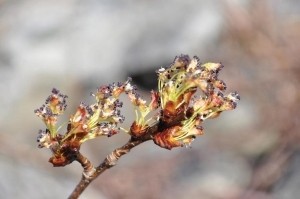
For six wintry months, trees have appeared as woodblock reliefs or iron sculptures, their bare limbs framed against a cold horizon. But as spring unfolds, stark branches morph into soft beauty. It’s as though one night the woodland fairies that Irish poets so readily imagine came and decorated every tree branch with a bouquet of flowers.
Spring foliage doesn’t usually get the glossy photo coverage that fall foliage does, but looking up into a tree’s crown this time of year can be similarly spectacular. All deciduous trees flower, and while forest trees may not have the wow factor of a dogwood or a flowering crab, each one wears a subtle boutonniere of stamens and sepals, petals and pistil.
Last spring, photographer Andrew Crosier took his camera for a walk among the river bottoms and hedgerows of western New York and southern Vermont to capture some of this beauty. He shot dangling poplar catkins that offered hillsides their first blush of pale green, sycamore globes that hung like inverted alliums among piebald limbwood, red maple flowers with matryoshka doll blossoms – flowers rising out of flowers.
From hundreds of his photographs we selected these 12 shots, a nice sampling of tree flower elegance and grace.
Happy spring, all. Here’s to the end of a long winter and the promise of summer days to come.
How Do You Sex A Tree?
Generally speaking, tree flowers have up to four parts: sepals (the green parts that protect the flowers), petals (the showy parts that attract pollinators), a pistil (the female part that matures into fruits), and stamens (the male, pollen-producingparts). If both male and female parts are present, the flower is said to be perfect.
If a flower has only one of the sexual parts, it is said to be imperfect; in this case, the male and female flowers grow separately. If male and female flowers are found on the same tree, the species is said to be monoecious, from the Greek meaning “one house.” If male and female flowers grow on separate trees, the species is dioecious (“two houses”). Many of our northeastern tree species are wind-pollinated, and many wind-pollinated plants are dioecious – this strategy promotes outcrossing.
Red maple is usually a good example of a dioecious tree (although every so often nature throws a curve ball and a male tree will produce a few female flowers).
You can tell a male flower by the spiky parts that protrude above the petals – these are called stamens. A stamen is made up of two parts, the filament – the long, thin stalk – and an anther –that little bump on the end. Each anther is full of pollen.
If a flower doesn’t have stamens, it’s female; instead, it has a pistil, the female part that is made up of an ovary, a style, and a stigma. The ovary is where eggs (technically “ovules”) are produced – when fertilized, they become the tree’s seeds. The style extends from the ovary and supports the stigma, a sticky or hairy pollen-receptive surface. In the case of red maple, the stigma is pollinated by both insects and the wind.


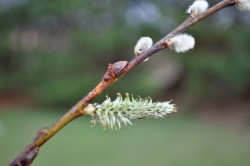
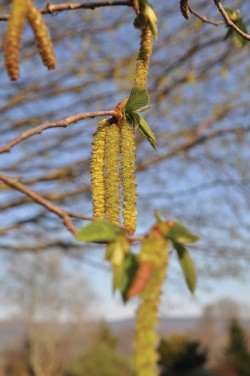
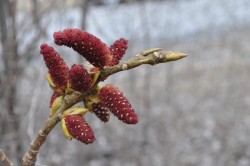
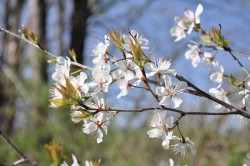
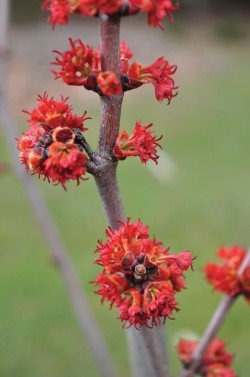
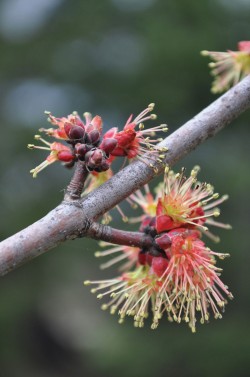
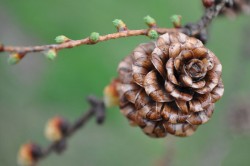
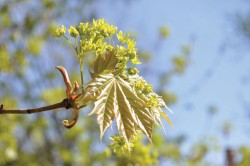
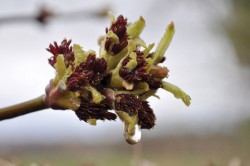
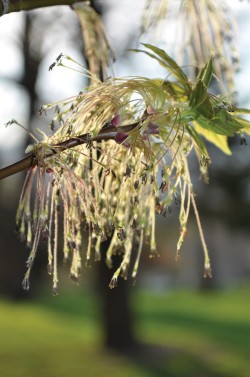
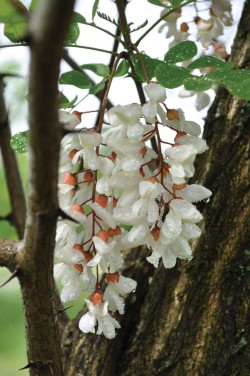
Discussion *